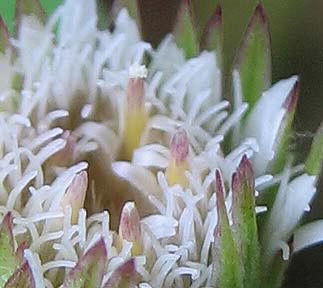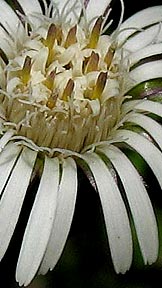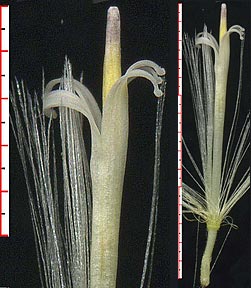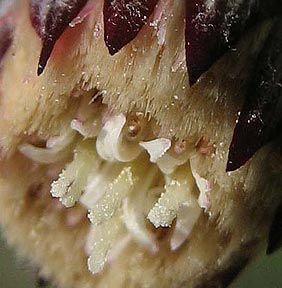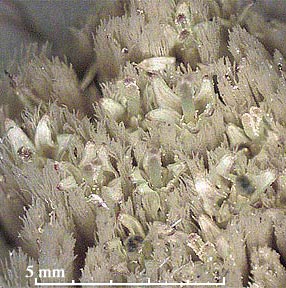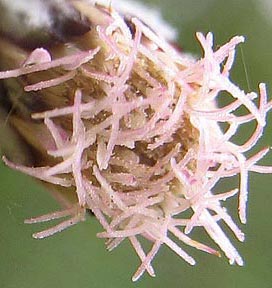Chaptalia texana Central (Perfect) Flowers
by Bob Harms


The central florets have a zygomorphic 5–lobed tubular corolla, c. 1 cm long, narrowing from c. 0.5–0.9 mm to c. 0.18 from the base of the lobes cleft to the achene apex. Although the lobes often appear to be actinomorphic, the tube has two deep clefts dividing them into two sets — not always apparent without strong magnification.
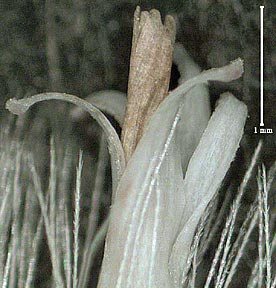
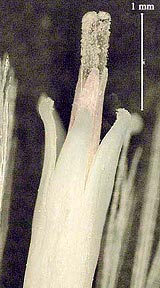
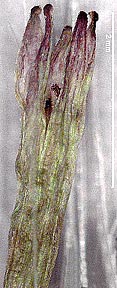
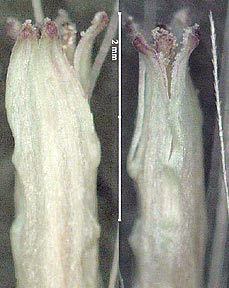
With the open–head floret (left 2 images above) the anther tube (and style branches) are generally exerted, although relatively late in anthesis — providing the sole source of pollen for sexual reproduction. [Achenes collected from fully mature heads of the open–head type at dispersal have germinated at a high rate.]
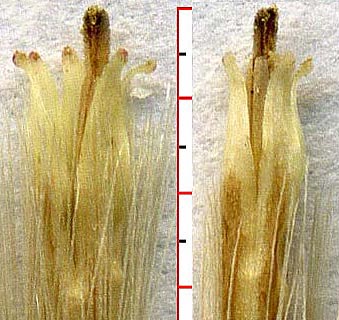
Central florets represented 13–19% of the total florets in a head (7–18 florets), the differences for the two types reflecting the fact that the open–head flowers contained more florets.
| percentage | totals | |
|---|---|---|
| open–head type | 13–17% | 12–18 |
| closed–head type | 16–19% | 7–14 |
Measurements of central floret length gave the same results for the two forms of C. texana; i.e.,
| average length | range | |
|---|---|---|
| open–head type | 1.1 cm | 0.88–1.2 cm |
| closed–head type | 1.1 cm | 0.9–1.2 cm |
As can be seen in the above photos, the central florets of the open–head type are more evident. Contrast the closed head on the far right above, with barely visible central florets. Additionally, we note:
- Corolla lobes of open heads are spread more widely, often recurved or coiling (as noted by Nesom for the genus).
- The style branches of open heads are more prominently exerted as are the anther tubes.
- The corollas are not contained within their pappus to the same extent as with closed heads.
| with open heads | with closed heads | ||
|---|---|---|---|
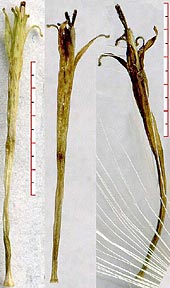
|

|

|
|
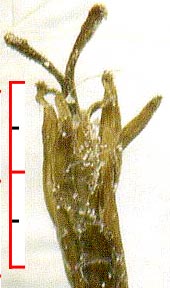
|

|
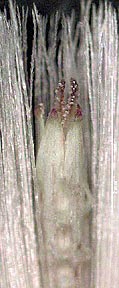
|
|
